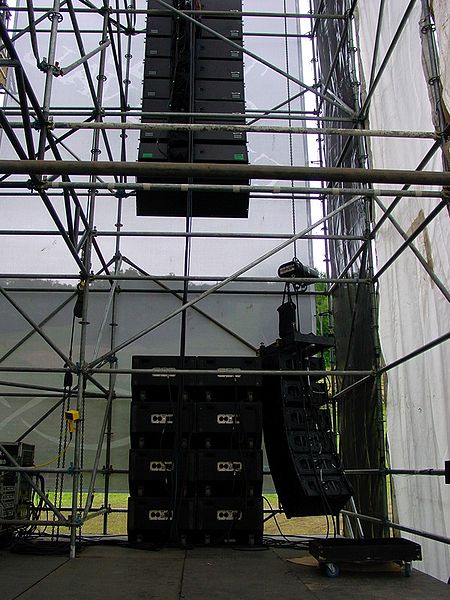A line array is a loudspeaker system that is made up of a number of usually identical loudspeaker elements mounted in a line and fed in phase, to create a near-line source of sound. The distance between adjacent drivers is close enough that they constructively interfere with each other to send sound waves farther than traditional horn-loaded loudspeakers, and with a more evenly distributed sound output pattern.
Center stage of German Rock am Ring music festival with two line arrays of 6 metres (20 ft) height each
L-Acoustics V-DOSC/dV-DOSC line array at a concert
NEXO STM M28 Line array at EXPO Festival.
Two different line arrays rigged near a cluster of subwoofers
A line source, as opposed to a point source, area source, or volume source, is a source of air, noise, water contamination or electromagnetic radiation that emanates from a linear (one-dimensional) geometry. The most prominent linear sources are roadway air pollution, aircraft air emissions, roadway noise, certain types of water pollution sources that emanate over a range of river extent rather than from a discrete point, elongated light tubes, certain dose models in medical physics and electromagnetic antennas. While point sources of pollution were studied since the late nineteenth century, linear sources did not receive much attention from scientists until the late 1960s, when environmental regulations for highways and airports began to emerge. At the same time, computers with the processing power to accommodate the data processing needs of the computer models required to tackle these one-dimensional sources became more available.

North–South Expressway in Malaysia. A roadway can be a line source of air and noise pollution and need not be a straight line.
The New Jersey Turnpike was one of the earliest line sources analyzed for noise
Colorado River, receiving effectively a linear source of silt from the sides of the Grand Canyon.
Common T8 fluorescent lighting tubes used in office environments








